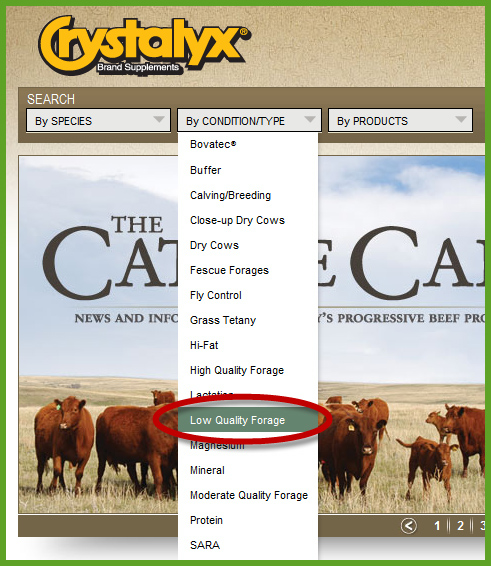Most of the cattlemen reading this blog will likely admit that they are in a drought, to some degree or another. Interestingly, some may have even sold hay from a bumper crop last year, for what seemed like a tidy profit at $125/ton, only to have to buy some back this year at prices $20 to $50 above that. What a difference el niño can make! For whatever reason, many Cattlemen are buying hay this fall, in order to get through the winter. And, for some cattlemen, hay may be scarce in their part of the country. CRP (Conservation Reserve Program) hay may be part of what they can make a deal on.
Water quality Part II: Nitrates
Water is a vital nutrient that we take for granted. We assume that if there’s water available for the livestock that we’ve taken care of that requirement. However, there are a number of factors that can negatively affect water quality and livestock performance. Earlier I talked about an easily identifiable factor of water quality, cyanobacteria. This time, I’ll cover one you can’t see, nitrates.
Beef cow supplement delivery impact on net nutrient availability
Maximizing Rumen Bacterial Growth and Forage Digestion
Several recent Block Blogs have discussed various aspect of feeding cattle to get the most out of the available forage. Mark Robbins discussed the use of Non-Protein Nitrogen and Dan Dhuyvetter reviewed how a natural brown seaweed meal called Tasco® and how they impact forage digestibility through improved rumen function. If we examine rumen function at the microbial level we get a better understanding of how nutrient and additive delivery through a low moisture block (LMB) self-fed supplement like CRYSTALYX® can dramatically improve fiber digestibility.
How can cow-calf producers get more from forages during drought
The drought will have lingering effects on cow-calf producers well into next year, especially in the areas of forage quality and availability. Any technologies, management practices or additives that can help us better use forages we have on hand should be evaluated to determine if their benefits will outweigh their expense. Probably the most predictable forage utilization responses observed are those directly affected by protein supplementation, particularly on low quality forages that are less than 8% crude protein. If you have lower quality forages, the addition of supplemental soluble protein that is degraded in the rumen provides an improvement in forage digestibility and often times increased forage intake. This provides added energy to your cow-herd from the forages that you have on hand in two ways. Cows will digest more nutrients from the forage and they will consume more of these low quality forages.

